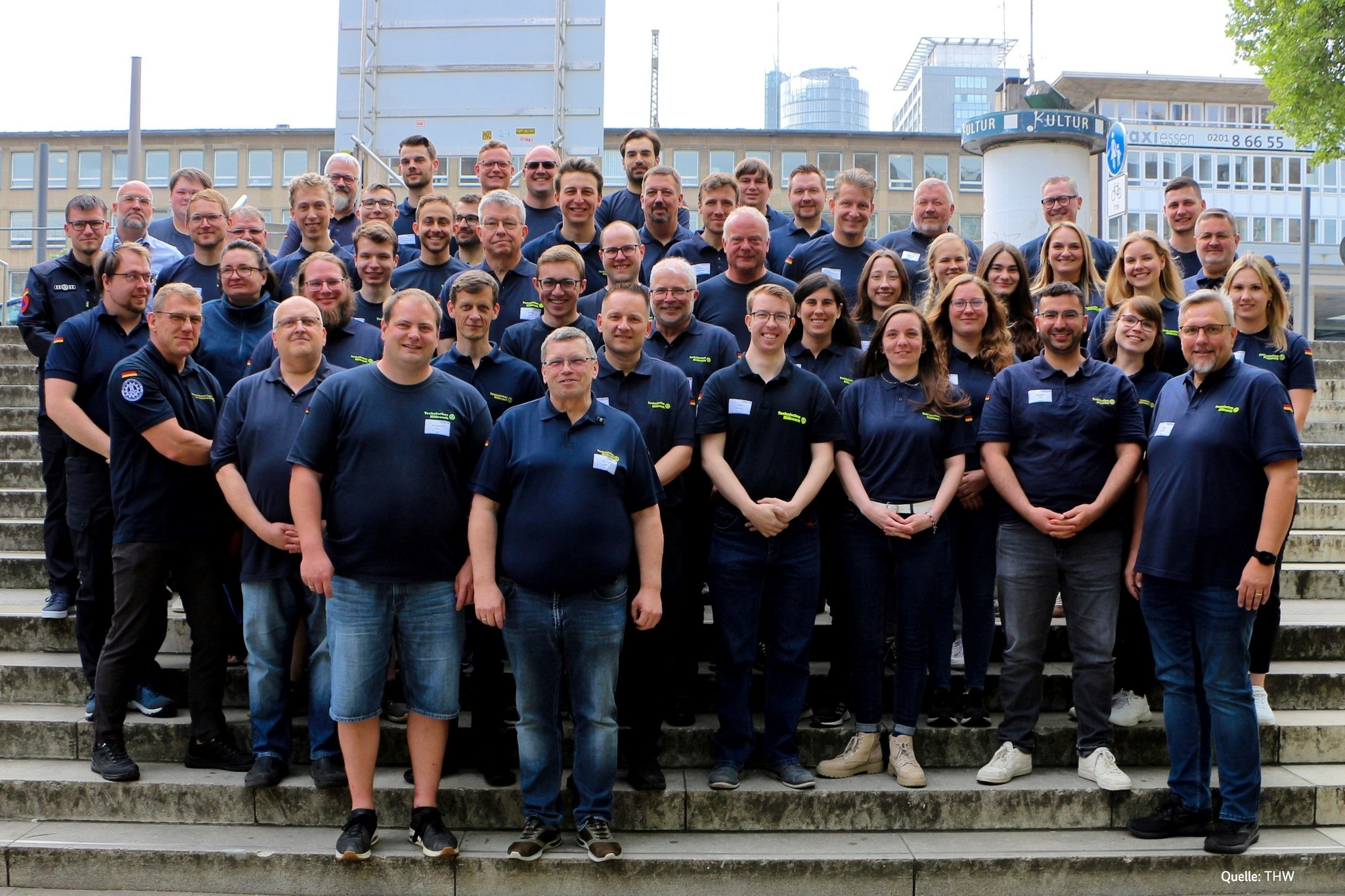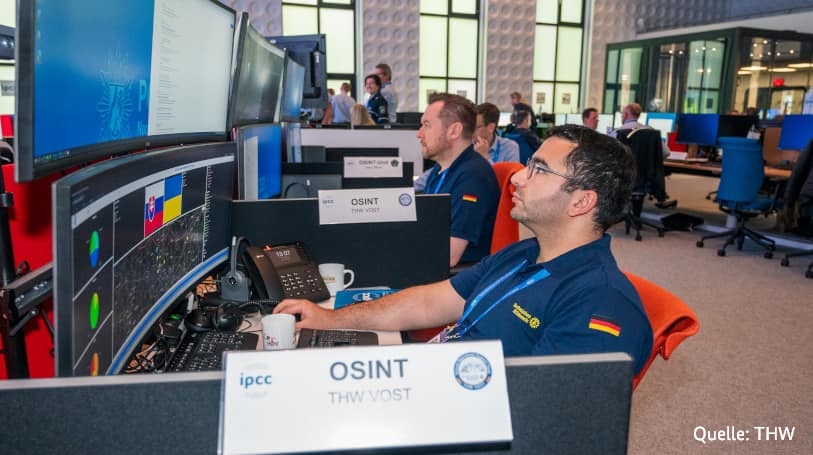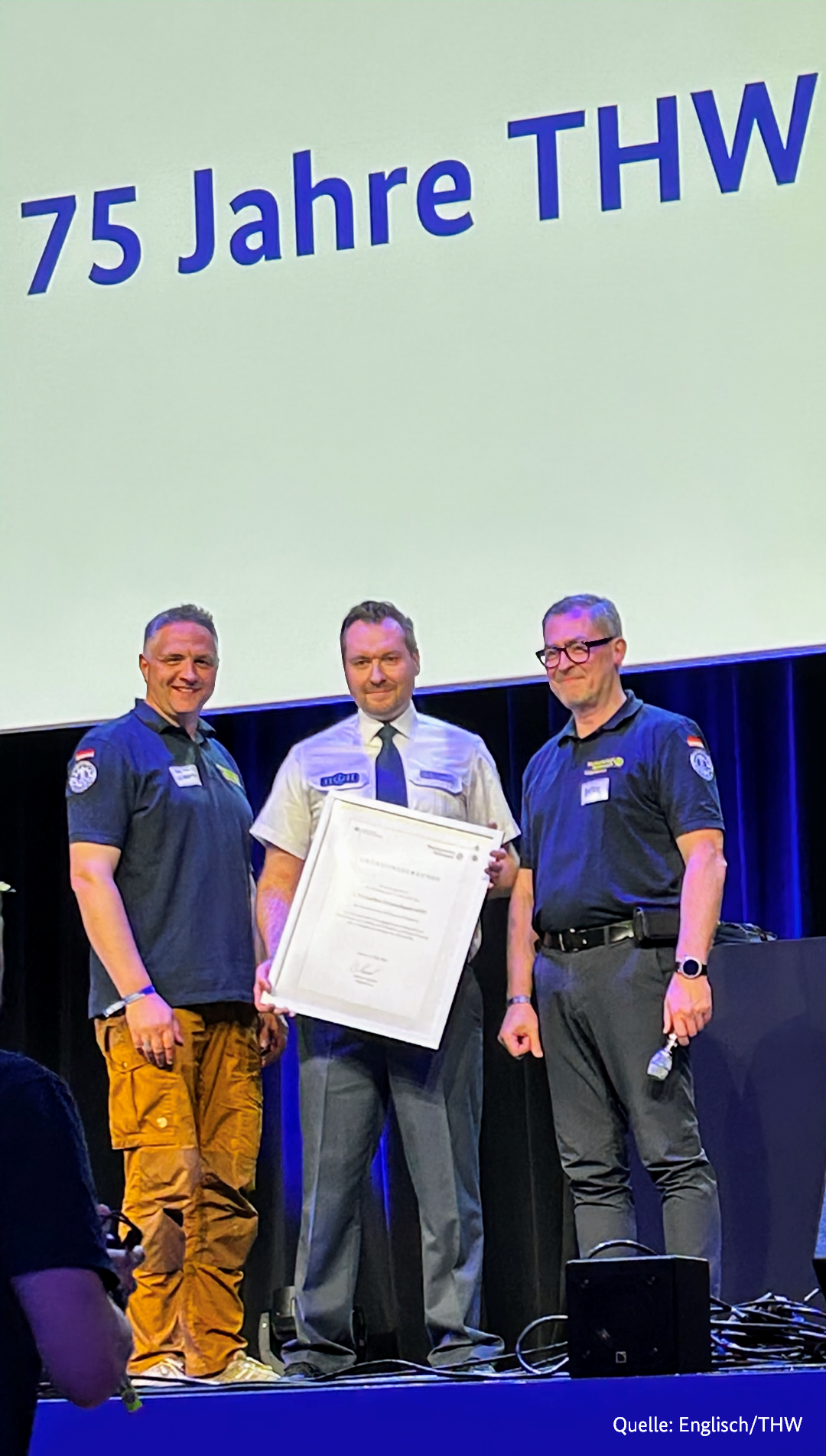30.06.2025 | Report
The Virtual Operations Support Team (VOST) of the Federal Agency for Technical Relief (THW) is a specialised, digital unit in civil protection that has played a central role in supporting crisis teams since it was founded in 2016. More than 70 dedicated volunteers from all over Germany work together in a digital network to analyse and classify decision-relevant information from publicly accessible sources in real time and prepare it as an overview for crisis management – for example in the form of maps, dashboards or structured reports. VOST relies on capabilities such as social media monitoring, open source intelligence (OSINT) and tools such as geographic information systems (GIS).

What makes VOST special is that it is flexible, online-based and inclusive – a volunteer possibility, which is open to people with a wide range of backgrounds. Volker Tondorf, founding member of VOST, current head of the team and local representative of the first virtual local organisation (vOV), provides insights into the special features, challenges and opportunities of this innovative form of digital engagement in civil protection.
From fascination to function – the path to digital volunteering
Volker Tondorf describes his path to digital volunteering as a combination of personal interest and social commitment: ‘My path to digital volunteering was characterised by my fascination for technology and the desire to continue to be involved in civil protection.’ He had already recognised the importance of digital media during his studies and his time in the rescue service – a field that still received little attention in Germany at the time. He summarises his motivation as follows: ‘Digitalisation offers enormous opportunities for civil protection – I wanted to help shape this change’.

At the International Police Cooperation Center (IPCC), EURO24.
Digital volunteering at VOST makes it possible to work flexibly and from any location. ‘The opportunity to help in a highly flexible way, regardless of location,’ describes Tondorf as a special attraction. The digital format in particular means that crisis teams can be supported with very little preliminary lead time, situation reports can be created and information can be provided that gives operational forces real advantages. The variety of operational scenarios, from natural disasters to combating disinformation, makes everyday life varied and exciting.
Digital skills and virtual teamwork as the key to success
VOST requires special skills from its members: ‘Analytical thinking, media skills, confident use of proven and new digital tools and remote teamwork’ are key. Although an affinity for technology is helpful, it is not everything: ‘Communication skills, the ability to work under pressure and a willingness to undergo further training are just as crucial.’
The work at VOST differs significantly from traditional forms of deployment. ‘In almost 100 per cent of cases, we also send liaisons or technical advisors to the crisis team of the requestor. These are the only people from the VOST who actually travel to the vicinity of the incident,’ explains Tondorf. However, the majority of the work is carried out virtually and is based on the systematic evaluation of social and digital media or data sources as well as the creation of digital situation reports and dashboards – a completely new form of deployment in civil protection that operates digitally and independently of location.

Presentation of the founding certificate
Inclusion and flexibility through digital formats
A major advantage of digital volunteering is inclusion, for example people with limited mobility can easily get involved: ‘The digital volunteering programme at VOST is perfect for inclusion,’ says Tondorf. The flexible time management and the variety of tasks enable individual focal points and promote broad social participation. In contrast to traditional ideas of disaster control, which often focus on robust equipment in the field, VOST shows ‘that a valuable contribution can also be made beyond water-repellent boots and sturdy tools.’ The digital form of collaboration creates new access routes for people who would otherwise hardly have the opportunity to actively participate in civil protection.
Challenges in operations and in the system
The VOST has already gained valuable experience in over 80 operations. The flood in the Ahr valley in 2021 was particularly challenging, as the team had to deal with a highly dynamic situation, a huge flood of information and high emotional stress due to eyewitness reports. At the same time, the spread of targeted disinformation was a major problem, which undermined confidence in the emergency services.
The organisational framework conditions also posed a challenge: ‘A purely virtual unit was not initially envisaged in the THW’s established structures.’ The recent founding of the first virtual local organisation marks a ‘decisive milestone for future integration into the regular structure of the THW ’. This shows how innovative and at the same time challenging the establishment of digital forms of volunteering in traditional civil protection is.
Training, exercises and the path to professionalisation
In order to prepare new members, the VOST ‘relies on a specially developed, digital and modular teaching concept.’ The specific requirements of digital volunteering have so far hardly been reflected in traditional THW training formats. Exercise scenarios are difficult to simulate realistically due to the special features of VOST, which is why the team often uses ‘real situations in which we are not officially involved as exercises’. This keeps digital collaboration alive and the operational capability is continuously developed.
Added value and prospects for digital volunteering in civil protection
According to Tondorf, the particular added value of digital volunteering in civil protection lies in ‘bringing in new skills, supplementing traditional structures and increasing the speed of response’. The VOST manages to build ‘a bridge between technical innovation and practical operational reality’. He sees great potential for the future, especially in the use of new technologies:
Screenshot of the VOST’s digital map of the 2023/2024 winter flood.‘AI-supported analyses, automated processes and new technologies can make a decisive contribution to overcoming situations in the future.’ At the same time, he warns of the risks: ‘AI-generated disinformation is becoming increasingly sophisticated and, in the worst case, can distort decision-making processes.’ However, a strong VOST could counteract this, by identifying and categorising reliable information as a ‘digital sensor’. Digital volunteering thus opens up completely new perspectives for civil protection, which is increasingly orientated towards the possibilities of digital networking and information processing.

Screenshot of the VOST’s digital map of the 2023/2024 winter flood.
Recommendations for beginners
Tondorf’s most important tip for anyone interested in digital volunteering is simple: ‘Get started, because volunteering begins where expertise is not left unused!’ Nobody has to be an expert; the team supports new members right from the start. ‘The most important thing is the willingness to take on responsibility at and to be part of a team that is committed to society.’ In conclusion, Tondorf emphasises: “Digitalisation is not an end in itself, but a tool. It can build bridges, promote participation and improve our overall protection.” The VOST has already shown many times that commitment ‘has many faces today – and every one of them counts.’
The VOST impressively demonstrates how digital volunteering and social commitment go hand in hand – and thus make civil protection fit for the future. In an increasingly networked world, digital deployment options open up new ways of making civil protection more flexible, inclusive and effective.